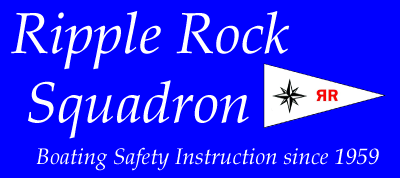Navigation Lights - More Advanced: Towing ahead or alongside, underwater operations, aground, etc. - Not often seen right around Campbell River, but you could see them on a trip to Vancouver, or up the Fraser River.
Caution:
- The following information has been simplified so we can give you a basic introduction using (mostly) non-technical language. Review the actual Regulations for in-depth information (we have noted the rule number, in square brackets, where practical). The Regulations can be found on our links page.
- A lot of effort has been made to ensure the information is correct, but errors may occur (If you find one please leave a message for our Webmaster).
- This information is intended for boaters on the BC Coast; it does not address modifications for vessels operating in the Great Lakes Basin.
Towing Alongside
[Rule 24 a and c]

- Note the amber, seen when towing astern is no longer used.
Pushing ahead
[Rule 24 a and c]

- Same individual lights as when towing alongside.
- If the two vessels are rigidly connected, and considered a "composite unit" they will be instead regarded as a power driven vessel of that overall length [Rule 24 b]
Vessel engaged in underwater operations, or dredging, and restricted in ability to manoeuvre, showing side to pass and side of obstruction
[Rule 27]

- The two red lights, or balls indicate the side where an obstruction exists. The two green lights, or diamonds show the side to pass.
- The day signal shows our vessel from forward.
- The lights may not be in the location shown, but must be where they can best be seen.
- In this example the vessel is at anchor. Note that no anchor signal is shown [27.d(iii)].
Not Under Command
[Rule 27 a]

- In this example, the vessel is making way, as it is showing sidelights and a sternlight.
- The two all round red may not be in the position shown, but need to be visible all round
Vessel aground
[Rule 30 d]

- In this example, the vessel is over 50m in length, so is showing a second anchor light aft.
- The two all round red may not be in the position shown, but need to be visible all round
Vessel Constrained by Draught
[Rule 28]

- The three all round red may not be in the position shown, but need to be visible all round
- The day signal is actually a cylinder, but hangs vertically, so may look like a rectangle.
- In Canadian waters, these lights are not to be shown in a roadstead, harbour, river, lake or inland waterway.
Vessel Engaged in Mine Clearance
[Rule 27 f]

- This vessel is less than 50m in length and requires a clearance of 1,000 metres all round
- It is very unlikely you will see this, but it might be used in a military practice area, such as Whiskey Golf
